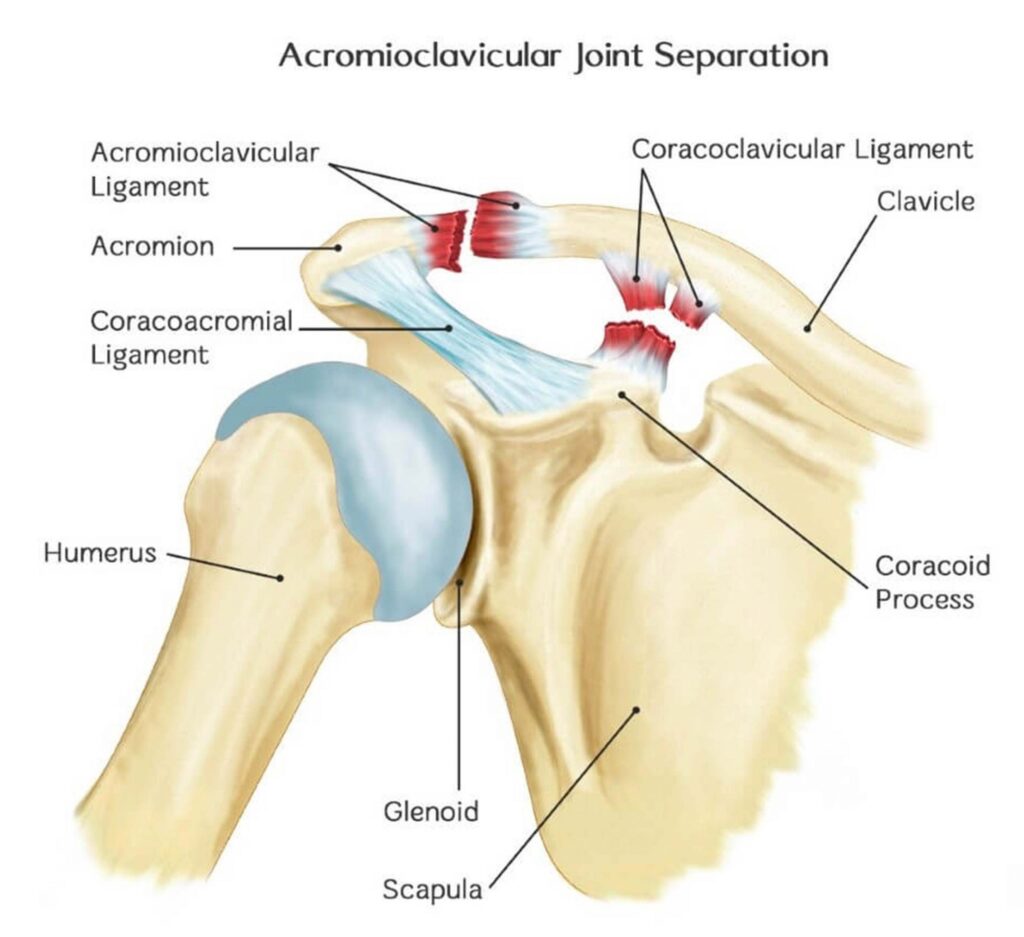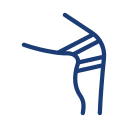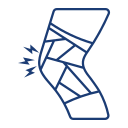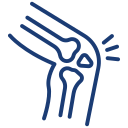Acromioclavicular Joint Injury
Acromioclavicular joint (AC joint) injuries can happen for many reasons, causing pain and limiting movement in the shoulder. It’s important to know about the causes, signs, diagnosis, and treatment options for these injuries to manage them well and recover effectively.

What is an Acromioclavicular (AC) Joint Injury?
The AC joint sits at the top of your shoulder, where your collarbone meets your shoulder blade. An AC joint injury means something has gone wrong with the ligaments, tendons, or cartilage in this joint. It could be a mild sprain or a full separation of the collarbone from the shoulder blade.
What are the Causes of AC Joint Injury?
AC joint injuries usually happen because of:
1. Direct Impact:Getting hit or falling on your shoulder can cause an AC joint injury
2. Overuse:Doing activities that strain your shoulder a lot, like lifting weights or playing sports where you lift your arms overhead, can lead to AC joint problems.
3. Wear and Tear:As you get older, the joint can wear down, making injuries more likely.
What are the Symptoms of AC Joint Injury?
✓ Pain:Feeling pain at the top of your shoulder, especially when you move your arm up or press on the joint.
✓ Swelling:The area around the AC joint might swell up and feel sore.
✓ Limited Movement:It could be hard to move your shoulder, especially when you try to lift your arm or reach across your body.
✓ Visible Changes:In serious cases, you might see a bump or a change in the shape of your shoulder, showing that the collarbone and shoulder blade have separated.
How to Diagnosed AC Joint Injury?
To diagnose an AC joint injury, Dr. Vishal Mandlewala at Renison Knee and Shoulder Clinic will:
✓ Check You Out:They’ll examine your shoulder to see if it’s tender, swollen, or hard to move.
✓ Use Imaging Tests:X-rays and MRI scans can show how bad the injury is and if anything else around the joint is damaged.
What are Treatment Options for AC Joint Injury?
Treatment depends on how bad the injury is and what symptoms you have. Options include:
✓ Rest and Ice:Taking it easy and using ice packs can help with pain and swelling.
✓ Pain Relief:Medicine like ibuprofen can ease discomfort and reduce inflammation.
✓ Support:Wearing a sling or brace can keep your shoulder stable while it heals.
✓ Therapy:Doing exercises to strengthen your shoulder and improve its movement can be helpful.
✓ Injections:Sometimes, shots of corticosteroids can lessen inflammation and pain in the joint.
Surgical Treatment for AC Joint Injury
If the injury is severe or other treatments don’t work, surgery might be needed. This could involve:
✓ AC Joint Reconstruction:Surgery to fix or rebuild the damaged ligaments to stabilize the joint.
✓ Removing Bone:Taking out part of the collarbone to ease pressure on the joint and relieve pain.
✓ Fusing the Joint:Joining the AC joint together to stop it from moving and lessen pain.
Take Home Message:
Knowing about AC joint injuries is vital for managing them well and bouncing back smoothly. Early recognition and the right treatment can help you get your shoulder working again with as little discomfort as possible. Dr. Vishal Mandlewala at Renison Knee and Shoulder Clinic can provide guidance and treatment options tailored to you.












